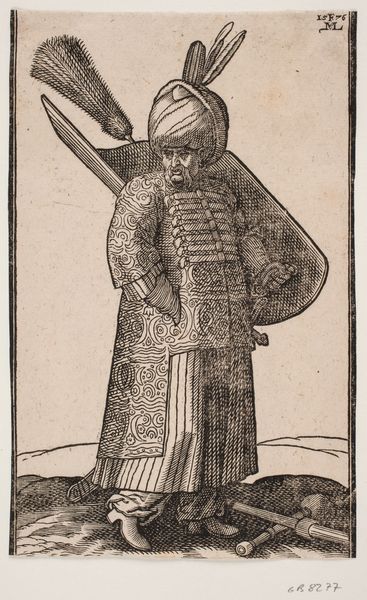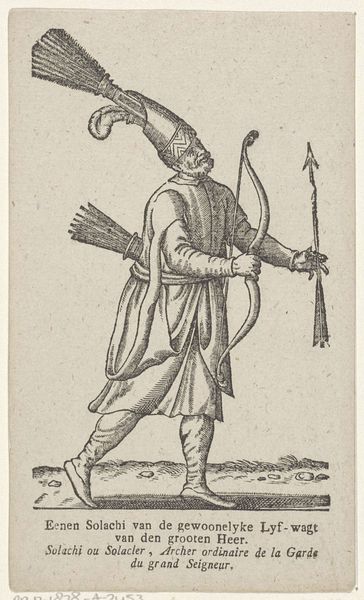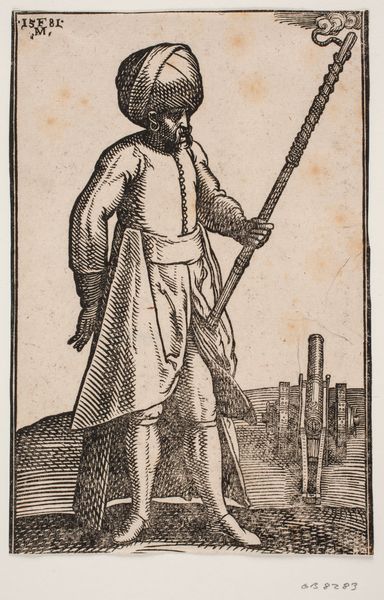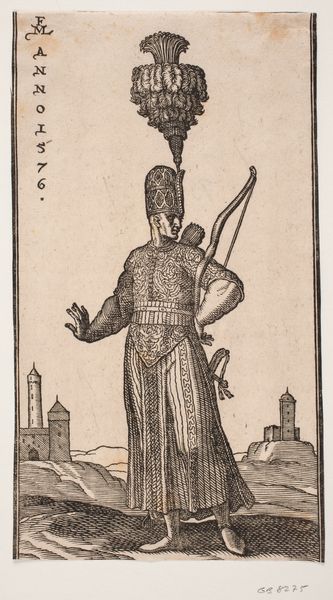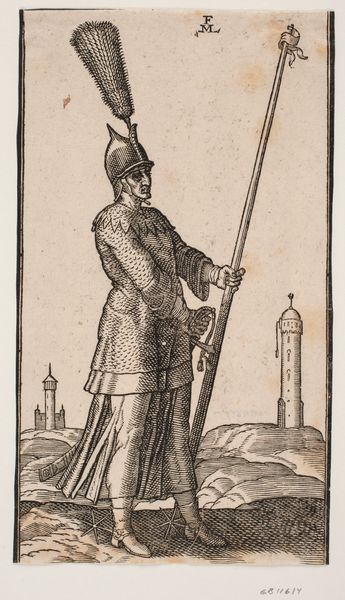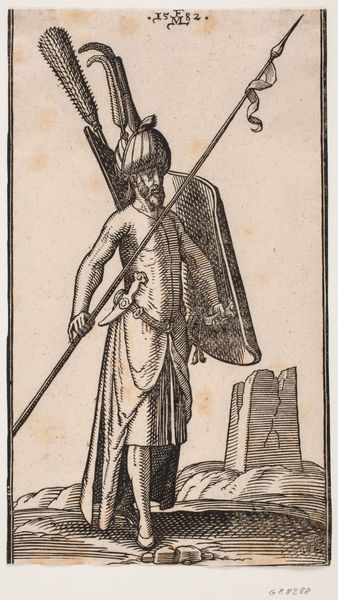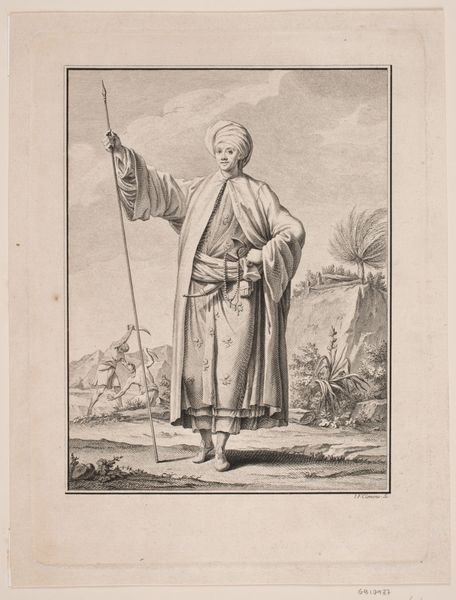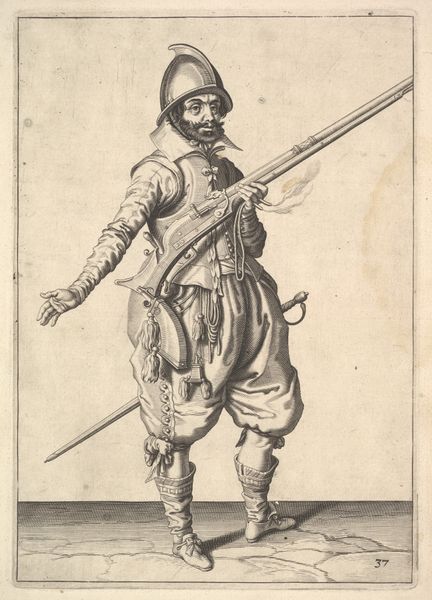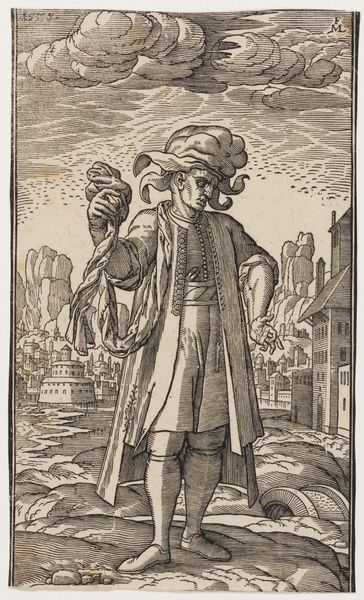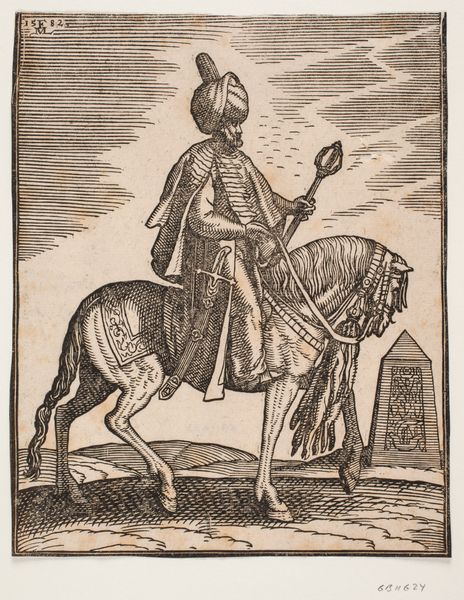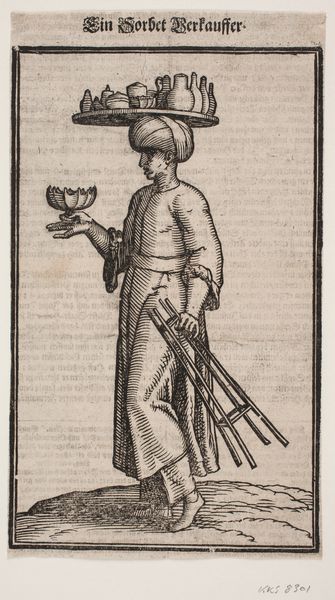
Standing soldier, seen from the front; in his right hand, a lance with a pennant on the tip; in his left hand, a club; on his head, a turban with two feathers; in the landscape, a "lighthouse" and a couple of obelisk-like buildings 1576
0:00
0:00
print, woodcut
#
portrait
# print
#
landscape
#
figuration
#
ancient-mediterranean
#
woodcut
#
islamic-art
Dimensions: 208 mm (height) x 137 mm (width) (bladmaal)
Curator: I find myself captivated by the image before us: a woodcut from 1576 by Melchior Lorck, titled "Standing soldier, seen from the front; in his right hand, a lance with a pennant on the tip; in his left hand, a club; on his head, a turban with two feathers; in the landscape, a "lighthouse" and a couple of obelisk-like buildings." Quite a mouthful, but descriptive! Editor: Immediately, I notice the stark contrast. The fine lines create this complex patterned robe and turban against a bare, almost desolate landscape. It projects a sense of isolation, despite the figure's bold stance. Curator: It's believed this is a portrayal of an Ottoman soldier. The imagery used certainly links it to the prevailing European understanding and representation of the "Orient". Notice the symbolic significance of the lighthouse—suggesting perhaps, a beacon, guiding or warning about this foreign power. Editor: And those obelisk-like buildings, seemingly ancient ruins, introduce a historical depth to the scene, don't they? Are they meant to evoke the glory or perhaps the decay of a civilization? The balance of light and shadow further emphasizes the soldier’s commanding presence. His gaze feels… unflinching. Curator: Absolutely. The turban with feathers, the lance, and the mace—these are all potent symbols of power and status within the Ottoman military. But I think there's also a deeper current here. Lorck, through his travels, was interested in authentic portrayals of different cultures. The soldier embodies both the "other" and a dignified warrior. The landscape in itself might also signify what the Orient symbolized back in the West—the unknown. Editor: I agree. The visual weight is so deliberately distributed. The linear precision conveys a strong sense of the subject's cultural weight. The landscape contributes a certain drama, almost like a stage setting, enhancing the symbolic value. Curator: And that's why this piece continues to resonate. It bridges historical representation with a formal artistic rendering, asking us to consider how cultures perceive and represent each other. Editor: Precisely. The artist uses a precise medium and balanced composition to spark a deeper contemplation beyond surface appearances. There's almost a silent power emanating from the piece.
Comments
No comments
Be the first to comment and join the conversation on the ultimate creative platform.
